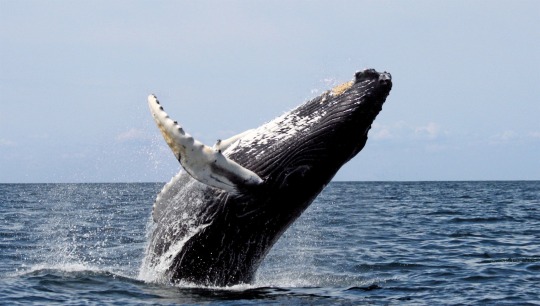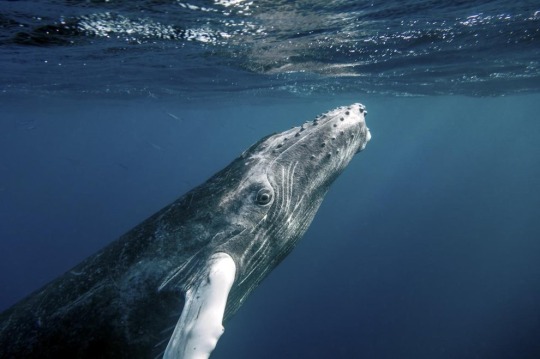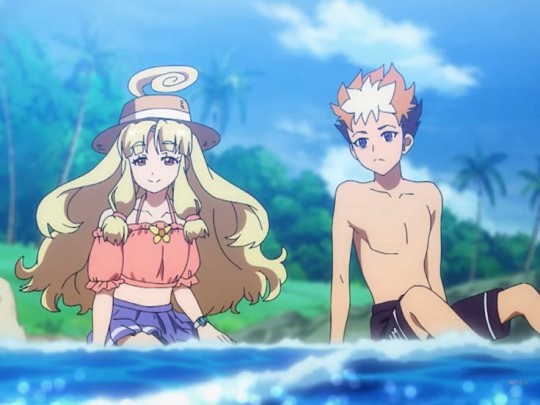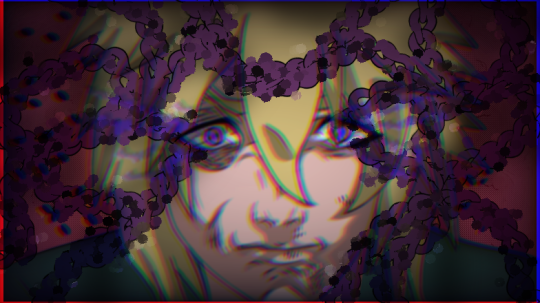#hahajima
Explore tagged Tumblr posts
Video
youtube
さらば母島!…その前にせっかくなので海水浴『萩→小笠原 往復4000キロの旅〜ハハジマメグロに会いたくて④〜』 #小笠原諸島 #東京の離島
みなさんこんにちは 今回は小笠原諸島の母島にしか生息していないという ハハジマメグロを撮影したくて 山口県萩市から往復約4,000kmの旅をしてきました 第4話は一通りの撮影を終えた後のお���
綺麗なビーチでのんびりして、ははじま丸で父島に向かいます
ちなみに今回ご紹介した動画シリーズに関連したグッズはこちらです
◇すずめの御朱印帳 https://minne.com/items/36761617
◇メグロちゃんグッズ https://suzuri.jp/tokyo-sparrow/omoide/163994
◇海が大好きなひとへの https://suzuri.jp/tokyo-sparrow/omoide/91731
よろしくお願いしますm(_ _)m
6 notes
·
View notes
Text

Fuwari Hahajima (Shadowverse Flame) » January 3
8 notes
·
View notes
Text



Ilustraciones del episodio 87 de Shadowverse Flame, veremos como lidian los demas ante los Shades ahora contando con dicho medio para luchar
3 notes
·
View notes
Text
docomo Bike Share launches "Ogasawara smile cycle," a shared bicycle service on Hahajima, Ogasawara Village.
On July 31, docomo Bike Share, in cooperation with the Ogasawara Village Industry and Tourism Division, launched the “Ogasawara smile cycle” shared bicycle service on Hahajima, Ogasawara Village. The aim is to improve transportation on the island, provide environmentally friendly and easy-to-use transportation services, and allow visitors to experience the nature and air of Hahajima, which can…
0 notes
Text
dying at the fact that Hahajima Island has as many people ON THE WHOLE ISLAND as there was students in my secondary school...
0 notes
Text
Ship Noises Mute the Songs of Humpback Whales
Drowned out by the din of passing ships, humpback whales attempting to breed off the coast of Japan are cutting their conversations short.
— By Katherine J. Wu

A Humpback Whale breaching near Stellwagen Bank National Marine Sanctuary in Massachusetts Bay. These whales may be imperiled by the sounds of passing ships, which silence their songs during mating season. Photo Credit: Whit Welles, Wikimedia Commons
With Its Enigmatic Chorus of Clicks, Groans, and Whistles, the haunting opus of the humpback whale (Megaptera novaeangliae) is one of the ocean’s most striking sounds. Every winter, humpbacks may swim thousands of miles to their seasonal breeding grounds, where males competing for mates fill the waters with soft serenades. But off the coasts of Japan, these seas are falling silent—and it seems humans are to blame.
Today, in the journal PLOS ONE, researchers report that the noises emanating from human-operated cargo ships disrupt the mating songs of humpback whales. Drowned out by the underwater din, some whales are even going completely mum in the vicinity of these vessels—which could have serious consequences for their reproductive success.
Beneath the surface of the sea, light falters fast. But because sound travels faster in water than air, keen audiophiles like the humpback whale use sound to navigate the dimly lit underwater world. These gentle giants engage in casual chatter year-round, but breeding season tends to feature prominent displays of song from males. Whale compositions are exquisitely complex, with at least 34 distinct sound types in the repertoire. Males will carefully remix their melodies as the years go by, and even pass tunes from population to population like vocal culture.
Despite all this, scientists still aren’t entirely sure why male humpbacks sing. Though musicality surges during periods of mating, song could serve a multitude of purposes, from gruff territorial warnings to come-hither calls. Whatever the whales’ rationale, it’s clear that song is crucial: Once they’ve warmed up, humpbacks can sing for hours on end, their ghostly echoes reverberating up to 100 miles through the surrounding sea.
youtube
But when humans enter the mix, being pitch perfect can be a double-edged sword. Unnatural noises from technological advancements like seismic airguns and military sonar have permanently disabled—and even killed—whales and their seafaring relatives.
Even the low-frequency hum of ships appears to perturb whales in conversation. The drones emitted by these ships can actually overlap with the frequencies of whale song, making it more difficult for humpbacks to pick out important bits of intel from the surrounding cacophony—the underwater equivalent of struggling to hear a friend in a busy restaurant.
Several researchers have observed whales changing their behavior in the presence of ships. However, compared to unmistakable consequences from airguns and sonar, it’s been challenging to reach a consensus on the extent of the effects of these more muted sources of noise, explains study author Tomonari Akamatsu, a biologist at the Japan Fisheries Research and Education Agency. In shipping hubs that see a lot of traffic, for instance, it’s difficult to disentangle which among the many possible disturbances are most problematic.
But the small outpost of Chichijima in Japan’s Ogasawara Islands presented a rare opportunity for Akamatsu and his colleagues. Separated from the southeastern coast of Japan by over 600 miles, the 2,000 or so residents of Chichijima receive just one daily ship: the Hahajima Maru, a small passenger-cargo vessel that ferries in a regular supply of goods and people from afar.
For the most part, the waters in this remote part of the world are quiet. But each winter, the seas swell with the symphony of hundreds of humpback whales eager to mingle with their mates—giving the researchers the chance to observe the effects of a single ship on the behavior of a wild population. The pristine nature of this locale stripped away other variables that could muddy the waters—other vessels, for instance, or inconsistent traffic.
“This study presents a really special and unique situation,” says Rosalind Rolland, a whale expert and veterinarian at the Anderson Cabot Center for Ocean Life at the New England Aquarium who did not participate in the research. “It’s very difficult to find anywhere in the ocean where there is just a single source of ocean noise. Most times there is noise from all directions.”
By placing two recorders in the waters near Chichijima, the researchers captured a series of whale vocalizations between the months of February and May 2017. Each day, they recorded one or two male humpbacks, amassing tracks of 53 soloists in total—half in the presence of the ship, and half without. The team also used the recordings to pinpoint the whales’ positions relative to the machinery as they sang, tracking their movements through time.
When the team mapped out the whales’ responses, the results were sobering. If the vessel was present, it produced, at its loudest, about 150 decibels of noise, comparable to the volume of a shotgun—and humpbacks seemed to shirk from its path, vacating the areas closest to the shipping lane. The whales that remained within 1200 meters of the ship produced fewer sounds overall. Some even cut their serenades off entirely—and most who did still hadn’t resumed their songs half an hour after the ship had passed through.

Humpback Whales rely on sound to communicate in the dark ocean waters. During their winter breeding season, males will sing for hours on end—but their serenades may be stifled by the sounds of passing ships. Photo Credit: Christopher Michel, Flickr
Akamatsu had initially assumed that in the presence of the ship, the humpbacks would raise their voices or change the frequency at which they sang—both strategies that might enable whales to discern calls above the clang and clamor. But, he says, perhaps this reticent response is an adaptive, energy-saving strategy.
“It’s actually very clever,” Akamatsu explains. “They know it’s temporary, so they just wait for it to pass.”
Vocal adjustments, after all, are exhausting. Even 500 to 1200 meters away from the ship, the whales were still contending with a noise level of about 100 decibels—roughly equivalent to a motorcycle or a raucous rock band. Perhaps, instead of attempting to outperform the uproar, humpbacks were simply waiting out the storm.
Every whale who stopped his song did eventually rebound from the chorus interruptus—and such resilience may spell tentatively good news for the residents of Chichijima, who remain tied to the Hahajima Maru’s regular visits. “This ship is a lifeline for an isolated island,” Akamatsu explains. “Humans need that ship to survive.”
But Michelle Fournet, a wildlife scientist in the Bioacoustics Research Program at Cornell University, points out that it’s also possible the humpbacks’ silence may not be indicative of flexibility at all. Muted by the regularity of passing ships, whales may be running out of sustainable strategies to cope, and instead accepting defeat. While bellowing above the fray may be exhausting, it at least offers whales a fighting chance of still being heard. Complete silence, on the other hand, brings the probability of communication down to zero. If humpbacks want any shot at coupling up, they can only wait so long for ambient noise to die down.
“Humpbacks have to contend with a lot of variability,” says Fournet, who was not involved in the research. “And they’re capable of adapting to natural sounds. But they may not always be able to apply those same strategies to [human-made] noise.”
While no long-term repercussions have yet been found, it will be imperative to measure the ship’s effects on humpback reproduction, Fournet adds. Even though most populations of humpbacks are no longer considered endangered, pods around the world remain vulnerable to human interference. And despite decades of study, researchers are still puzzling through the intricacies of whale song. It’s unclear how disastrous even the tiniest tweaks to a tune could be for humpbacks trying to find each other in the dark.
And, of course, the calm of Chichijima is the exception, not the rule: Most ships don’t sail solo. Acoustic pollution from human-made vessels will likely be on the upswing for years to come, warns Paul Wensveen, a biologist who studies marine acoustics at the University of Iceland. Even technological Band-Aids like insulators, which muffle the sound from ships’ propellers, are quickly overwhelmed by the sheer volume of noise radiating from the world’s busiest ports.
If humankind’s presence in the ocean continues to grow, there may soon be little stopping the whales’ brief intermission in song from turning into an irreversible coda.
“Some of the whales’ strategies have been successful so far,” says Fournet. “But as the ocean gets louder, and more vessels come in, we can only expect to see more changes.”
#Youtube#Nature#NOVA#Humpback 🐋 Whales 🐳#Katherine J. Wu#Stellwagen Bank | National Marine Sanctuary | Massachusetts Bay
0 notes
Photo

母島の記念スタンプ。 母島一周ツアー。 #東京 #東京離島 #母島 #離島 #島 #island #tokyo #travel #東京の離島1ヶ月渡り歩きます会社 #東京別視点ガイド #別視点 #hahajima #離島生活 #自然 #固有種 #小笠原諸島 #植物 #plants #記念スタンプ (Ogasawara-mura, Tokyo, Japan)
#東京別視点ガイド#離島#小笠原諸島#自然#東京#別視点#植物#島#母島#hahajima#travel#固有種#東京離島#tokyo#記念スタンプ#plants#離島生活#東京の離島1ヶ月渡り歩きます会社#island
19 notes
·
View notes
Text

Japonya’nın Hahajima Adası’nda 5,5 büyüklüğünde deprem https://sahrahaber.com/japonyanin-hahajima-adasinda-55-buyuklugunde-deprem/?utm_source=dlvr.it&utm_medium=tumblr
0 notes
Text
Ok but why is nobody writing a Subaru x Fuwari fic?? I NEED IT
4 notes
·
View notes
Photo



Your Guide To Hahajima, The Pearl Of The Ogasawara Archipelago
Located almost 1000 km away from the city center of Tokyo, Hahajima Island is in the Ogasawara Archipelago. Let's learn more about how to get to Hahajima and about the accommodation facilities and local delicacies of this remote island haven.
https://matcha-jp.com/en/3926
9 notes
·
View notes
Text
Why don’t you see the 360 degrees view from Mt.Kofuji in Hahajima island of Ogasawara ?
Why don’t you see the 360 degrees view from Mt.Kofuji in Hahajima island of Ogasawara ?
Why don’t you see the 360 degrees view from Mt.Kofuji in Hahajima island of Ogasawara? The earliest sunrise of Japan I’m Nobu, I like traveling overseas and in Japan, visited 25 countries. I’ve got the license of the certificate English guide in Japan for 7 years.I show you hidden Japan which you have never seen and heard of! Trekking on Mt.Kofuji ( little Fuji) in Hahajima. I have been…

View On WordPress
3 notes
·
View notes
Photo

The Curse Of The Priestess is NOW available for Pre Order (Release date 01/03/2019) The gods have abandoned us. The mighty of this island care not for our fate. Only the priestess watch over Hahajima, and in her, we believe. ⤵️ https://www.amazon.com/dp/B07P1Z9P6D?ref_=pe_3052080_276849420 #bookstagram #book #novel #new #kindlebooks #kindle #amazon #horrorstories #mystery #mythology #priestess #japan #tokyo #hahajima #island #booklover #kdp #selfpublish #curse #horror #magic #egypt #teacher #gate #torii #forest #miko #sourcery https://www.instagram.com/p/BuYoP-xl_oZ/?utm_source=ig_tumblr_share&igshid=1bbvk8t0qoolq
#bookstagram#book#novel#new#kindlebooks#kindle#amazon#horrorstories#mystery#mythology#priestess#japan#tokyo#hahajima#island#booklover#kdp#selfpublish#curse#horror#magic#egypt#teacher#gate#torii#forest#miko#sourcery
0 notes
Photo

母島でもORB配布してもらえています。カフェ・レストラン キャプテン・クック、母島観光協会、カフェ・ショップ ルシエルにあります。協力してくれたBrasilさん、ありがとうございます。 ORB is now also available on Hahajima at restaurant Captain Cook, the tourism association office, and cafe Le ciel. #freepaperorb #ogasawaraislands #boninislands #hahajima https://www.instagram.com/p/Bt9sbXch75I/?utm_source=ig_tumblr_share&igshid=1foyx5rvcvrsd
0 notes
Text

Será que algún momento Subaru y Fuwari lleguen a algo o quedará como Buenos amigos
Hay que decir Subaru se empezó abrir mejor sus sentimientos cuando empezó a tratar con Fuwari, recordando aquel primer encuentro que estos tuvieron, eso si sabemos cómo es Fuwari le gusta ayudar a todo mundo, a veces me pongo a pensar en caso si llegan a salir el grupo le diría papá Subaru XD como Fuwari muchos la llaman mamá
5 notes
·
View notes
Text

Meet Hiromi Namikaze 洋美,波風 (hiro-mi, means beautiful ocean, Namikaze means waves and wind) the mother of Minato and grandmother of Naruto, great grandma of Himawari and Boruto, Menma and Enkai (SNS orochimaru test tube babies) . She is 40 years old here and at the start of Naruto's birth , 51 at the end, and 54-57 is at the end of shippuden, 57- 60 during the last, during the start of boruto she is 68. During timeskip boruto era she is 69-73. This is when she dies.
Her birthday is February 3rd.
In this image she is going crazy with rage at hearing how Minato died and fell in battle fighting the Kyuubi. Her face is disfigured as a result of being taken down to third class in Kiri all those years ago. The purple chains are meant to show her mental state, starting to snap for the second time, while her eyes glow purple and emit purple streaks in her rage.
She is from the Land of the Sea (海の国, Umi no Kuni) which is where the name Namikaze originates and lives on the main island Hahajima, after moving back at 16, while pregnant with Minato, due to the insistance of her lover and Usagi her older sister, wanting a better life for the baby. She resents her father for dying and making them third class, including Kirigakure for the system itself and has no complaints about leaving. She shortly retires before leaving, having been a hunter nin for most of her life.
Her retired ninja class was Special Jounin level, though she was a hunter nin.
First Databook: Beginning of Part I
Ninjutsu - 4.5
Taijutsu - 3.5
Genjutsu- 1.0
Intelligence- 4
Strength -2
Speed-4
Stamina -2
Total- 21 points
- Her specialities are tracking, sensory perception and stealth/speed.
Chakra elements - wind and water.
- story so far-
She moved to Kirigakure at the age of 7, with her aunt Usagi (Typhoon, of the waves and wind) who was born in Kiri, raised by their father their as well, who was at that time was a Jounin. Her father originally came from Kirigakure, he died during a accident in an B ranked mission when she was 10. Her mother hailed from the land of the ocean and was a civilian medic, they met when her father was on a mission request.
As then a member of the 1st class, highest class in the bloody mist village's heriarchy status, she didn't have to kill her classmates in order to graduate (as according to novel canon), until after her father died 3 years later.
She enrolled in the Academy at the age of 7, graduated at age 10.
Was promoted to Genin, showed remarkable prowess among the battle field. Until her father died, she was getting C and D ranked missions, they steadily climbed up to B ranked when she was 12, remaining at that level for half a year before skyrocketing to an A ranked mission that she had almost died if it had not been for a generous Konoha ninja, named Tamashi Uzumaki, who saved her with his medical and finjutsu abilities, putting her cells into statis and triggering cellular regeneration using his scroll of stolen stored chakra.
A year after recovery with Tamashi, in hiding, she goes back to the hidden mist, where she partakes in the chunin exams ranking up to Chunin at age 13. During this time she hones medical skills and her wind style : cutting edge jutsu, including her sensory perception which is prominent throughout her mother's lineage as select Namikaze have and had renowned sensory perception, due to many attacks on their island, the family honed in on being able to sense each members chakra signal, which then led to the levels of chakra perception Minato has, though some were able to tell right away who's chakra was who's.
After 4/5 years as a chunin she once again is begrudgingly promoted to Jounin and enrolled in the hunter nin program, gaining her own mask and uniform. While this went on, she was dating a few women and men,though could never find one who wasn't afraid of her ptsd induced outbursts and her insominac sleeping habits.
After about almost a year, she meets Tamashi again on a S ranked mission, with her team who is a distant descendant of the uzumaki clan, Juneichi Uzumaki, from Uzushio his 2 x great grandpa and a civilian family from Konoha. She knows Uzushio has been being targeted for years, though they have kept those away with their finjutsu barrier. Tamashi dyes his hair brown for this mission and grows a stache, but his red uzumaki eyes remain, with his porcelain freckled skin and sunkissed shoulders.
(Tamashi is 18 at this point)
She slays her teammates to save his life, owing him a lifebond debt, though he cares not for it. Slowly they meet secretly, between journeys until they one night meet under the night sky and share their love, creating minato, who arrives a year later after their move back to her family home in Hahajima.
As she is only of Kiri blood relation and was not born their, Kiri lets her leave, due to her service as a hunter nin and her specialities because she knows some of their darker secrets they do not want getting out. She vows not to tell and is placed under a jutsu that shows up as a small dot on her shoulder that will kill her if certain phrases are uttered.
They attempt to blind her, and succeed partially, though Tamashi is able to restore some of her eyesight.
She meets naruto as a newborn and horrified by how much he truly looks like Minato, she leaves in tears stating she cannot bear to see his face, though secretly she has him stated to the heir of her fortune and family home.
#boruto hinata#naruto uzumaki#naruto shippuden#sasunaru#naruto oc#boruto oc#minato namizake#minato#konoha#boruto uzumaki#himawari uzumaki#menma uzumaki#enkai uzumaki#namikaze oc#namikaze
15 notes
·
View notes
Text
Apalopteron familiare

By Nesnad, CC BY 4.0
Etymology: Delicate Feather
First Described By: Bonaparte, 1854
Classification: Dinosauromorpha, Dinosauriformes, Dracohors, Dinosauria, Saurischia, Eusaurischia, Theropoda, Neotheropoda, Averostra, Tetanurae, Orionides, Avetheropoda, Coelurosauria, Tyrannoraptora, Maniraptoromorpha, Maniraptoriformes, Maniraptora, Pennaraptora, Paraves, Eumaniraptora, Averaptora, Avialae, Euavialae, Avebrevicauda, Pygostaylia, Ornithothoraces, Euornithes, Ornithuromorpha, Ornithurae, Neornithes, Neognathae, Neoaves, Inopinaves, Telluraves, Australaves, Eufalconimorphae, Psittacopasserae, Passeriformes, Eupasseres, Passeri, Euoscines, Passerides, Core Passerides, Sylviida, Sylviodiea, Zosteropidae
Status: Extant, Near-Threatened
Time and Place: Since 10,000 years ago, in the Holocene of the Quaternary


The Meguro is known only from the Bonin Islands of Japan

Physical Description: Meguro are small, but distinct, little birds - also known as Bonin White-Eyes for their distinctive white patches around the eye. In general they are yellowish and olive in color, and they range between 12 and 14 centimeters long. The heads are yellow with a golden crown, and a very distinctive black triangular patch over the eye. They have long, slightly curved, very pointy beaks. Their backs are olive, with olive and black wings; the tails are somewhat short and also olive and black. The underbellies are yellowish-green. They do not differ in plumage based on sex, and the juveniles are even very similar to the adults!
Diet: Meguro primarily feed on soft fruits like papaya, bananas, mulberry, and sometimes flowers. They will supplement their diet with insects from time to time.

By Lars Petersson
Behavior: These birds will forage alone or in small groups, sometimes in mated pairs. They search together among twigs and leaves, and also in trunks, searching for food sometimes in places where woodpeckers have been. They also will pick up food off of the ground - without other small passerines in the area, they are able to have a very diverse foraging ecology. They rarely sing, but when they do they make very complicated chew-i chit-chit-pee chot-chot-pee che-ee melodies, and sometimes more of a tittling melody, for up to three seconds. They will also make songs indicting it is time to fly from perches, and call to each other with mall “pee-pit” sounds. Meguro also make harsh “weet-weet” calls when mobbing potential threats. They will disperse through most of their range in the non-breeding season, though they don’t seem to move from island to island.
Meguro breed from March through June, and usually produce one brood, though sometimes two broods are made. They have at least a year-long pair bond, and may gather in small parties during the breeding season. The parents build the nest together, making a deep cup out of leaves, grasses, twigs, and needles. They usually place it fairly high off of the ground, laying one to four eggs per nest. Both parents will feed the chicks. The incubation period lasts for about two weeks, and the babies stay with the parents for a month until they leave the nest.

By Tomohide Shimura, CC By-SA 4.0
Ecosystem: These birds are found nearly everywhere on Haha-jima, including in non-forested areas, though of course they prefer forests of all kinds. They breed best in the most native forest patches, ad are rare in low shrubs and less forested areas. Interesting enough, despite the introduction of the warbling white-eye to the region, they are able to coexist and Meguro have adjusted their niche accordingly. They do, however, affect each others’ behaviors to some extent. Meguro are important seed dispersers, helping to maintain healthy forests. They are hunted upon by introduced predators - especially cats.
Other: Despite being hunted upon by cats - and having multiple populations decimated by them - they do appear to be stable in population, and as such are listed as Near Threatened rather than Vulnerable as they were recently. Strongholds in habitat have allowed for the maintenance of population of Meguro despite the increase of cats and rats on the island. They have coped with the introduction of other birds to the island, as far as research has shown. As such, while conservation efforts are ongoing to protect the islands and, thus, Meguro, they do not appear to be in immediate threat of extinction.
~ By Meig Dickson
Sources under the Cut
Jobling, J. A. 2010. The Helm Dictionary of Scientific Bird Names. Christopher Helm Publishing, A&C Black Publishers Ltd, London.
Kawakami, Kazuto; Higuchi, Hiroyoshi (2002). "Bird predation by domestic cats on Hahajima Island, Bonin Islands, Japan". Ornithological Science. 1 (2): 143–144.
Kawakami, Kazuto; Higuchi, Hiroyoshi (2002). "The first record of cavity nesting in the Ogasawara Islands Honeyeater Apalopteron familiare on Hahajima, Bonin Islands, Japan". Ornithological Science. 1 (2): 153–154.
Kawakami, Kazuto; Higuchi, Hiroyoshi (2003). "Interspecific interactions between the native and introduced White-eyes in the Bonin Islands". Ibis. 145 (4): 583–592.
Kawakami, Kazuto; Higuchi, Hiroyoshi (2003). "Interspecific learning by the Ogasawara Islands Honeyeater Apalopteron familiare from the Japanese White-eye Zosterops japonicus on Hahajima, the Bonin Islands, southern Japan". Ornithological Science. 2 (2): 132–134.
Kawakami, Kazuto (2013). "Bonin White-eye" (PDF). Bird Research News. 10 (5): 4–5.
Kawakami, Kazuto; Higuchi, Hiroyoshi (2013). "Estimation of the Population Size and Viability of the Bonin White-Eye Apalopteron familiare in the Bonin Islands, Japan". Ornithological Science. 12 (1): 51–56.
Suzuki, Tadashi; Morioka, Hiroyuki (2005). "Distribution and Extinction of the Ogasawara Islands Honeyeater Apalopteron familiare on Chichijima, Ogasawara Islands". Journal of the Yamashina Institute for Ornithology. 37 (1): 45–49.
van Balen, B. (2019). Bonin White-eye (Apalopteron familiare). In: del Hoyo, J., Elliott, A., Sargatal, J., Christie, D.A. & de Juana, E. (eds.). Handbook of the Birds of the World Alive. Lynx Edicions, Barcelona.
#Apalopteron familiare#Apalopteron#Bonin White-Eye#Bird#dinosaur#Meguro#Birds#Perching Birds#Songbirds#Dinosaurs#Factfile#Frugivore#Songbird Saturday & Sunday#Australia & Oceania#Quaternary#Passeriform#biology#a dinosaur a day#a-dinosaur-a-day#dinosaur of the day#dinosaur-of-the-day#science#nature
70 notes
·
View notes